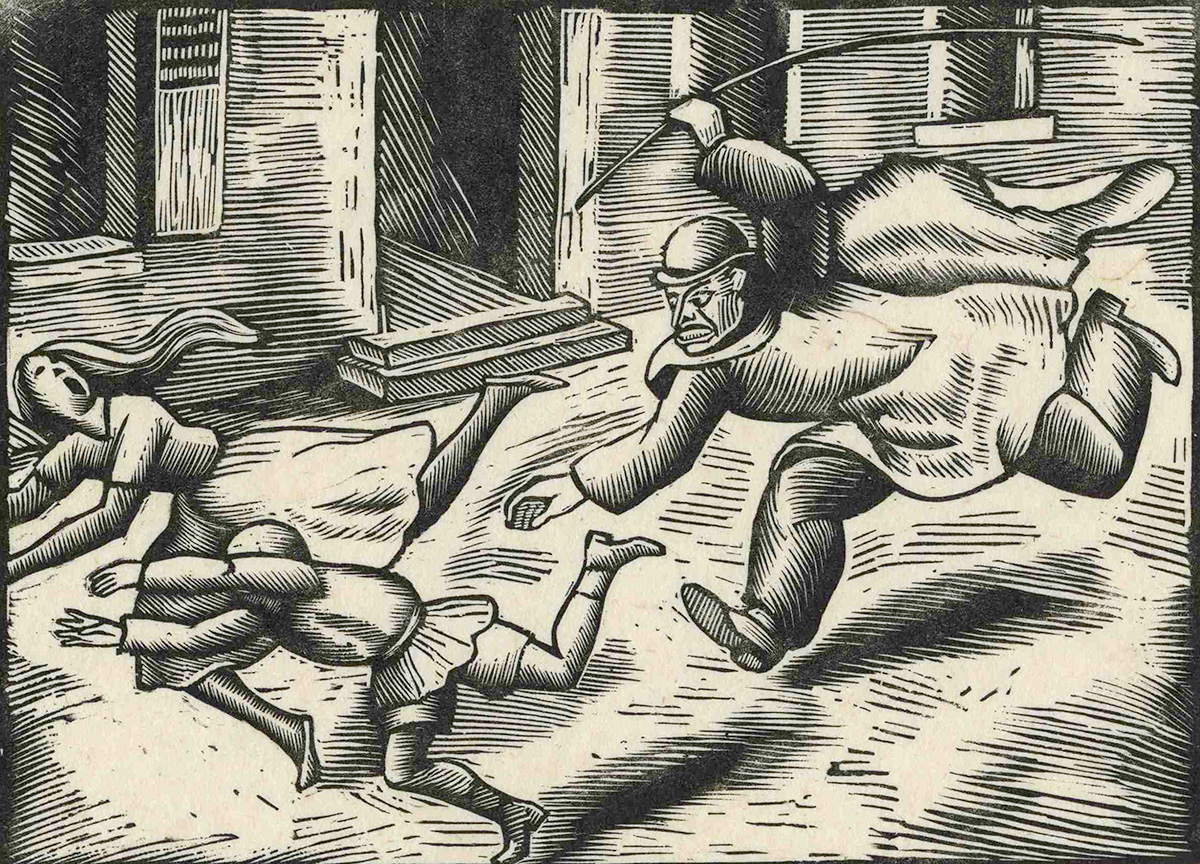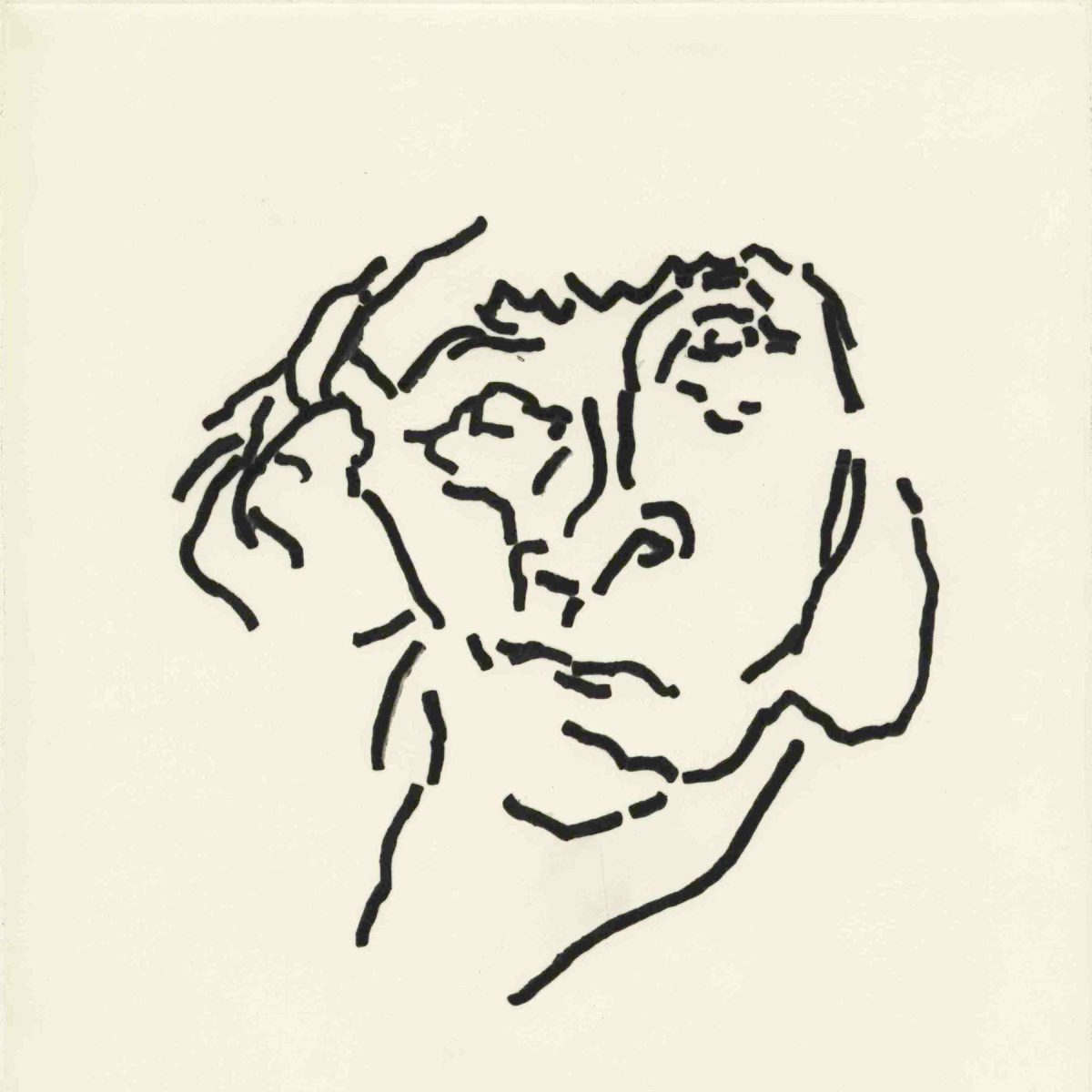Collection
Additional Collections
Over the years, the Fondation’s dedication to preserving and presenting its collection through exhibitions and accompanying publications has drawn the interest of artists, their families, collectors and all kinds of print enthusiasts. As a result of their generosity, a number of donations and bequests have supplemented the original core collection, filling in many of its gaps and contributing new stories to its history of this incredible artform.
-
-
Donation of cut-outs by Jean Huber
-
André Desponds Collection
-
Urs
-
Jon Goodman
-
Jacqueline Oyex Fund
-
Isabelle and Jacques Treyvaud donation
-
Acquisition of the Rossier-Koechlin collection
-
Berton-Huguet collection
-
Donation Manuel Müller
-
Ilse Lierhammer donation
-
Pierre Schopfer
Henry Bischoff
In 1979, Luc Bischoff and Marie-Claude Lavanchy, the children of the printmaker and painter Henry Bischoff (1878-1951), decided to donate their father's complete oeuvre of prints to the newly created Fondation. This remarkable collection, which includes all his published proofs, as well as diverse studies (preparatory drawings, proofs, colour tests) was the subject of a retrospective exhibition at the Musée de l'Elysée in spring 1982. The exhibition then travelled a few months later to the Reinhardt Foundation in Winterthur.
Donation of cut-outs by Jean Huber
Adding to their parents' original gift of prints by Dürer and Rembrandt, Madeleine and Olivier Cuendet donated a generous body of some seventy “tableaux en découpures” by Jean Huber a few years later, while the Fondation's treasures were still housed at the Musée de l'Elysée. The art of Huber, a little-known artist from Geneva, combines supreme technical skill with a sensitivity, through the grace of outline alone, to spatial illusion. In Huber’s prints, genre scenes and antique paintings, intimate feelings and heroic deeds all come to life. His découpage (paper cut-outs) foreshadows Matisse’s late work in that medium, when the French modernist master sought an expression of childhood and play through the very essences of the visible and the simplest of means—but Huber’s use of paper was entirely his own, and wholly unexpected. This collection of Huber’s work also includes a number of etchings, drawings and books, revealing the artist to be a great observer of nature.
-
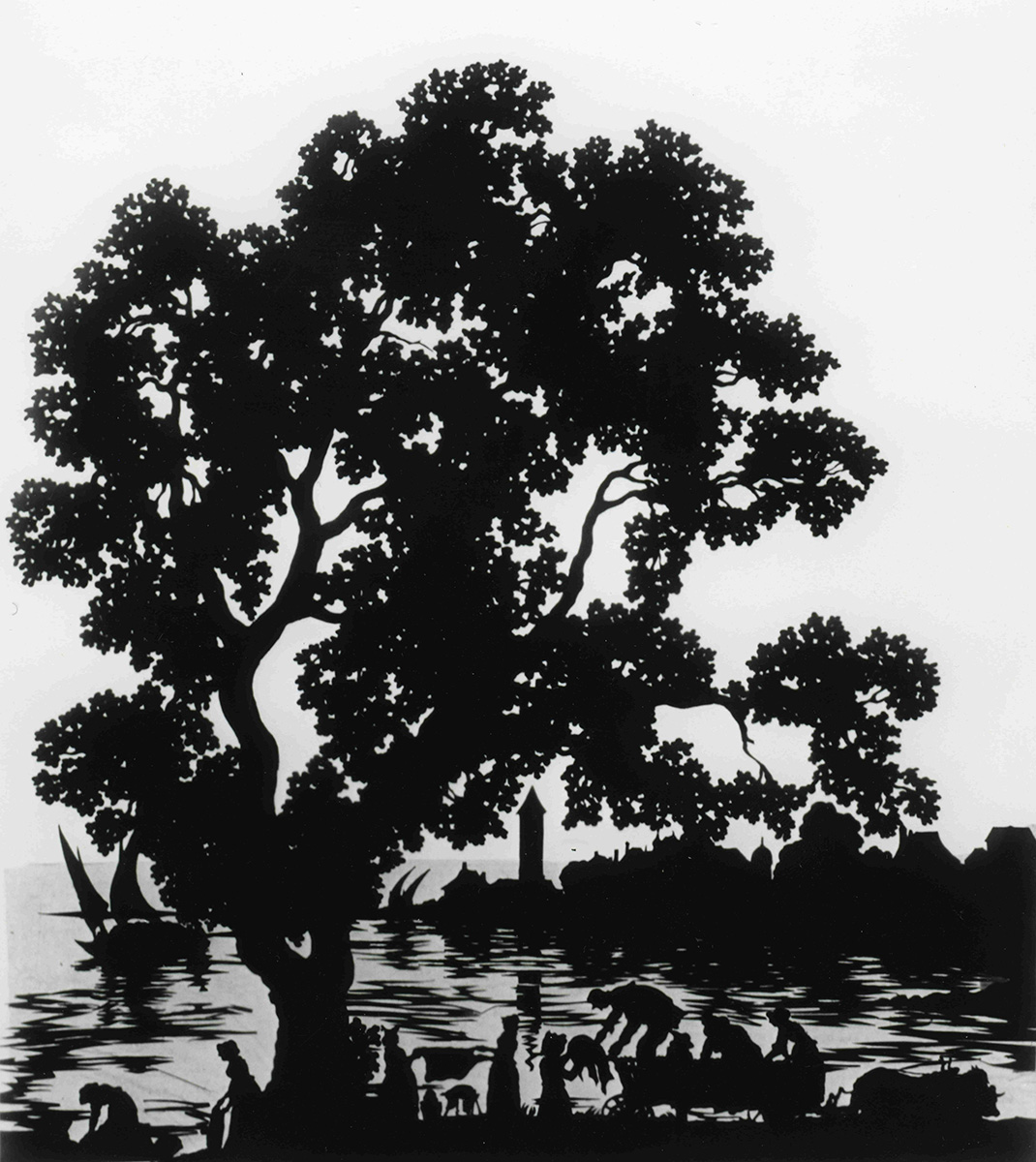
Jean Huber, known as Huber-Voltaire (1721-1786), Le grand chêne au bord de l’eau (The Great Oak Tree by the Water), undated, cut-out painting on laid paper, FWC&ASP-Huber-032
André Desponds Collection
After a brilliant study of the classics in Lausanne, André Desponds became an eminent philologist fascinated by music and languages, particularly the dialects of his homeland. It was during the engraving exhibitions organised by the Atelier de Saint-Prex at the Château de La Sarraz in 1974 and 1976 that this print enthusiast met Pietro Sarto. Thereafter, the collector would frequently visit Sarto’s studio in Saint-Prex, where Desponds’s pertinent questions, extensive knowledge and insatiable curiosity would provoke countless epiphanies and constant reconsiderations. A discreet, even secretive man, on his death he bequeathed a collection of prints that surprised many. From Jacques Callot to Jacques Villon, the works amassed by this attentive and demanding collector illustrate a remarkable consistency and coherence, despite his notorious lack of resources. Alongside a precious collection of Japanese prints, the names of Claude Lorrain, Robert Nanteuil, Gérard Edelinck, Delacroix, Daumier, Seymour Haden and Toulouse-Lautrec reflect André Desponds' attraction to rigour, concision and the simple expression of feeling, all virtues he also sought out in his study of the French language.
-
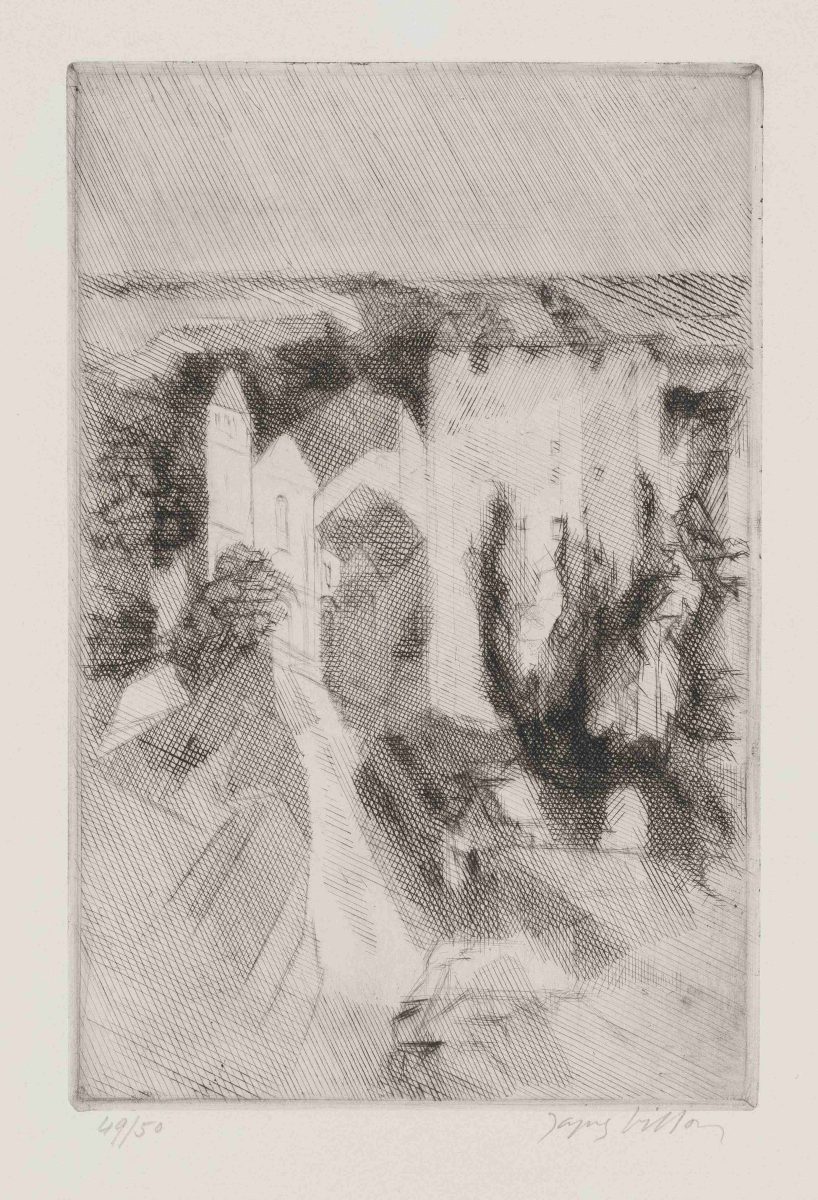
Jacques Villon (Gaston Duchamp) (1875-1963), Les trois ordres, Beaugency (The three Orders, Beaugency), 1939, etching and drypoint on wove paper, FWC&ASP-Desponds-0041
-
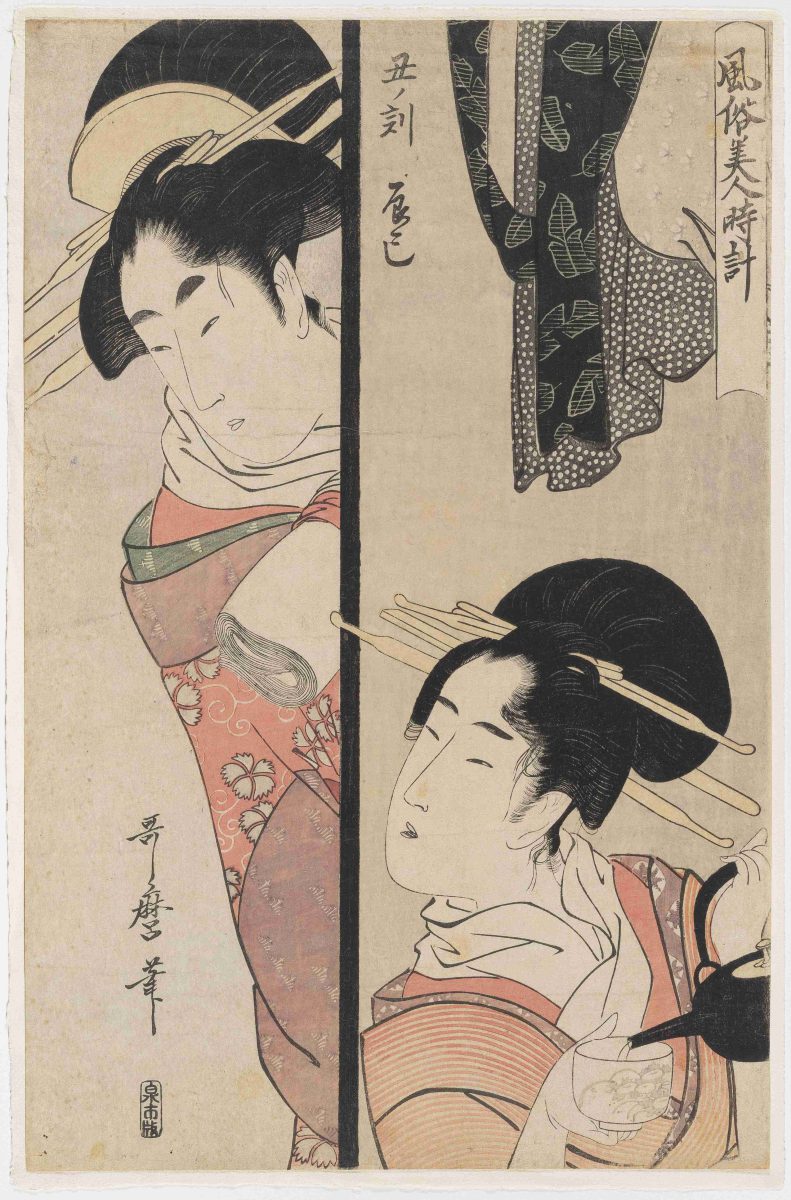
Utamaro Kitagawa (1753-1806), The hour of the ox in Fukagawa (Ushi no koku tatsumi), from the series “Customs of Beauties Around the Clock (Fūzoku bijin tokei), 1793 – 1804, Colour woodcut on Japanese paper, FWC&ASP-Desponds-0049
Urs
Frédéric Studer, of Swiss-German origin, was born in Muralto in 1926. From 1944 to 1948, he apprenticed as a draughtsman-lithographer. In 1953, in Paris, he tried his hand at cartooning and adopted the pseudonym ‘Urs’. His rapid success as a cartoonist led to publications in Paris-Match. Forced to return to Switzerland because of his wife's illness, he was hired by the newspaper 24 heures for its Sunday edition, and at the same time he contributed to other local publications. His style is characterised by minimal, incisive lines and a humour that is at times dark and gritty, at times light and mischievous. His awards include the 1970 Prix International de l'Humour in Montreal, the 1974 Premier Prix Hippocampe d'Or in Vasto (Italy), and the 1979 1st Prix Knokke-Heist. He has published several collections of cartoons, including La fleur et le gibet (1959), 100 dessins d'Urs (1964) and Citations illustrées par Urs (2002). In addition to his work for the public press, Urs pursued a more personal studio career in printmaking, drawing and painting. In 1965, he joined the group ‘L'Épreuve’, an association of printmakers which, in 1971, formed the Atelier de Saint-Prex, to which he remained very close. He has exhibited his work in several galleries, most often at l'Entracte in Lausanne, Edouard Roch in Ballens and the Galerie du Château in Avenches. Over the years, he also built up an impressive art collection, including a large group of paintings by his friend Jean Lecoultre.
A keen photographer, he never went anywhere without his camera, capturing life in Lausanne and the art galleries he frequented. He thus produced a collection of over twenty thousand photos, which, in accordance with the wishes of his godson, were transferred to the Musée historique de Lausanne after his death in 2005. In 2006, his large-format paintings and pastels were entrusted to the Fondation Ateliers d'artistes, and a large part of his personal art collection was transferred to the Musée de Pully.
In the same year, Catherine McCready added forty works on paper to the 148 already inventoried in 1996.
-
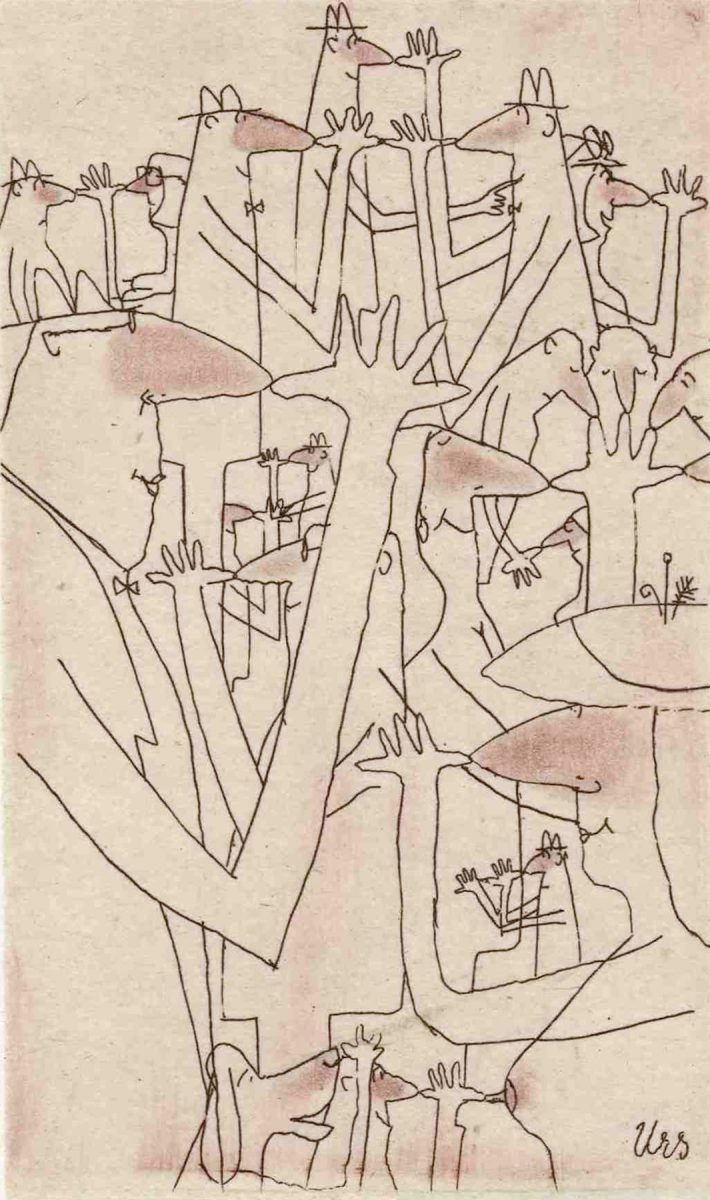
Fréderic Studer, known as Urs (1926–2005), La Nique, undated, autograph on Chinese paper applied to Duchêne wove paper, FWC&ASP-1996-0400
Jon Goodman
In 1977, the American photographer Jon Goodman was looking for a studio in Europe to help him print photographs by Edward Steichen. After several attempts to do so in Germany, he got in touch with the Atelier de Saint-Prex, which had been working on similar projects for several years. Pooling their respective skills, they prepared the copperplates and printed several sheets by Steichen, Paul Strand and various other representatives of the Golden Age of English photography. Several albums were entrusted to the care of the New York publisher Aperture. In recognition of the years he spent in Saint-Prex, Jon Goodman added a large number of rotogravures of his own compositions to the first collection of plates printed in the studio.
-
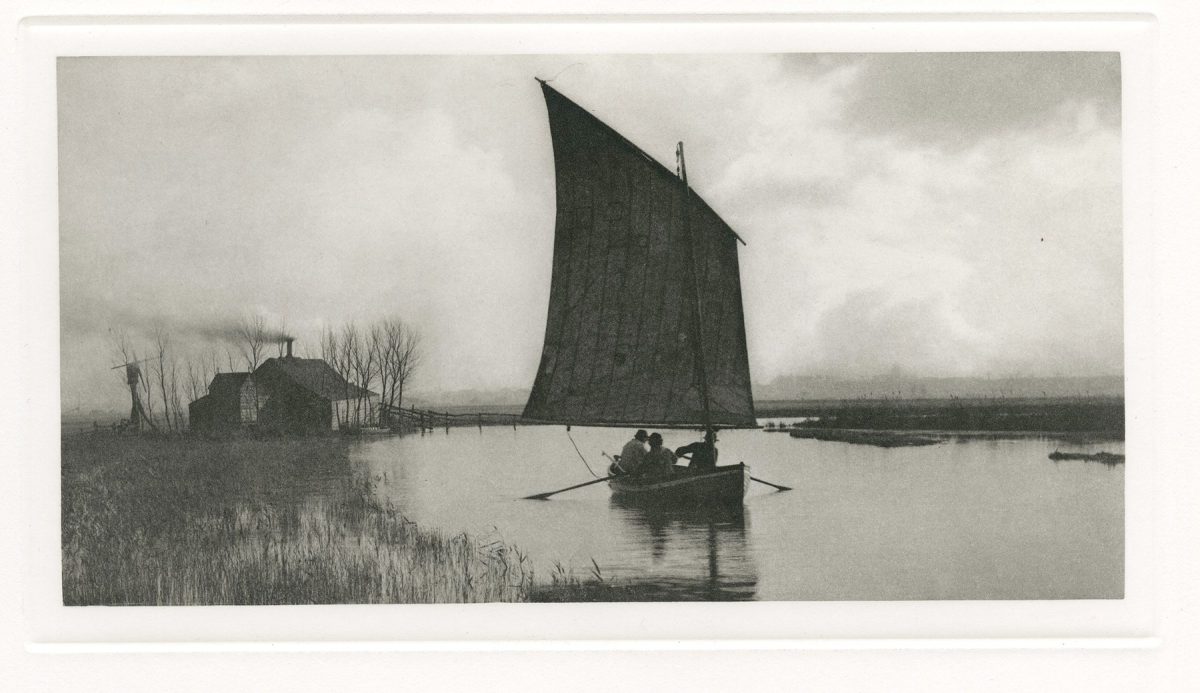
Jon Goodman (*1953), from the original negative of Peter Henry Emmerson (1856-1936), The Old Order and the New, 1886, 1985, Photogravure on Lana wove paper, FWC&ASP-2001-0016
-
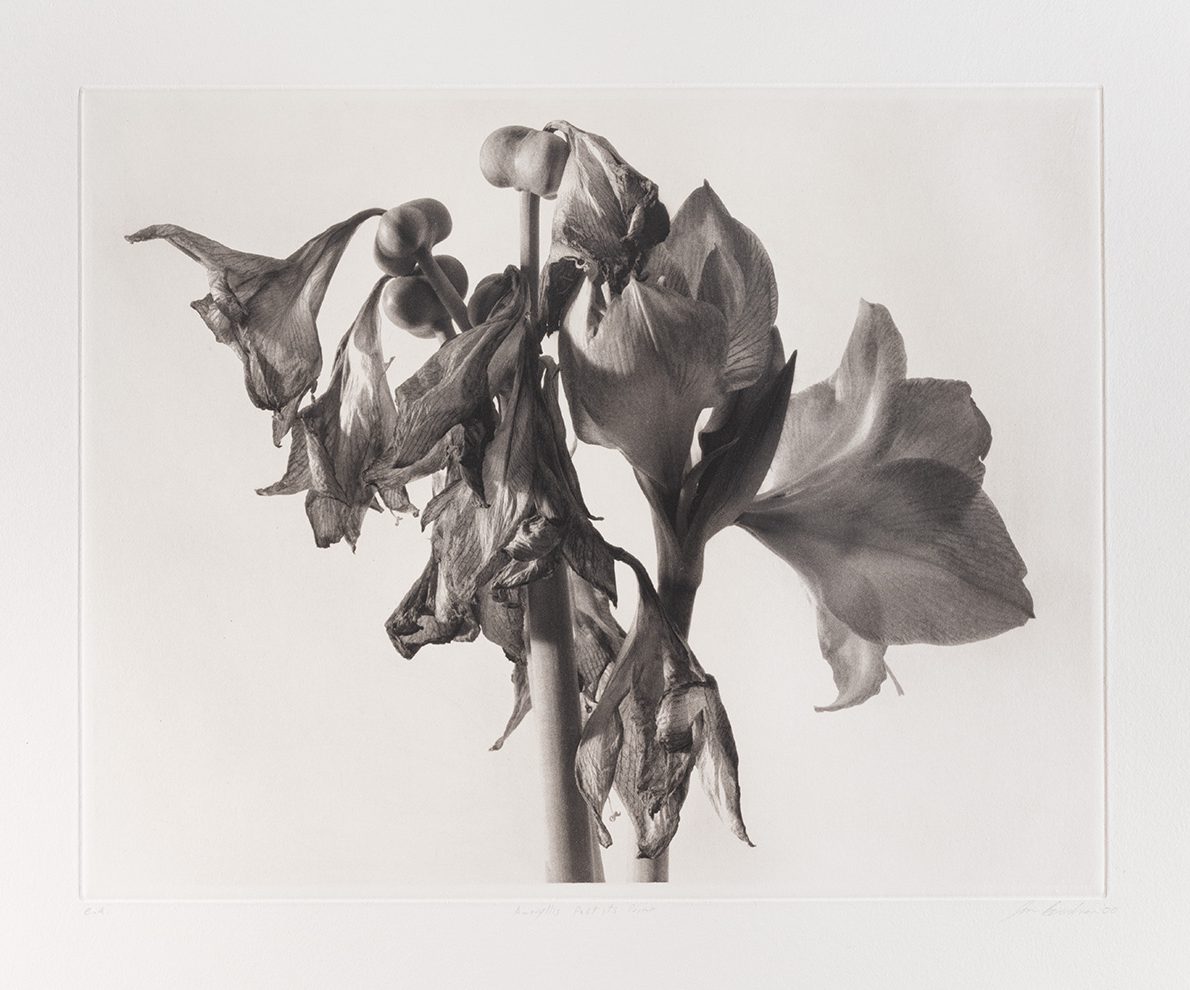
Jon Goodman (*1953), Amaryllis Past its Prime, 2000, Photogravure on Somerset wove paper, FWC&ASP-Goodman-2001-0244
Jacqueline Oyex Fund
Born in Lausanne in 1931, Jacqueline Oyex faced a profound sense of guilt from an early age due to the death of her twin brother at birth. This burden shaped her life, and she developed a quiet and introspective personality. Throughout the artist’s years, she developed a deep platonic love for her teacher, Casimir Reymond (1893-1969), a bond that endured til his death in 2008. In addition to her paintings, Jacqueline Oyex created an impressive body of work in etching, with nearly 600 copper plates to her name. More than 400 of these plates were printed after her death by the Atelier de Saint-Prex, where she had worked since the 1960s. The Fondation Jacqueline Oyex, established to honor Oyex’s artistic legacy, commissioned this collection and supplemented it a donation of two paintings and forty drawings from the writer and publisher Jil Silberstein. Discussions are currently underway to complete the Fondation Jacqueline Oyex collection of her printed works, aiming to have her entire oeuvre engraved at the Fondation William Cuendet & Atelier de Saint Prex.
-
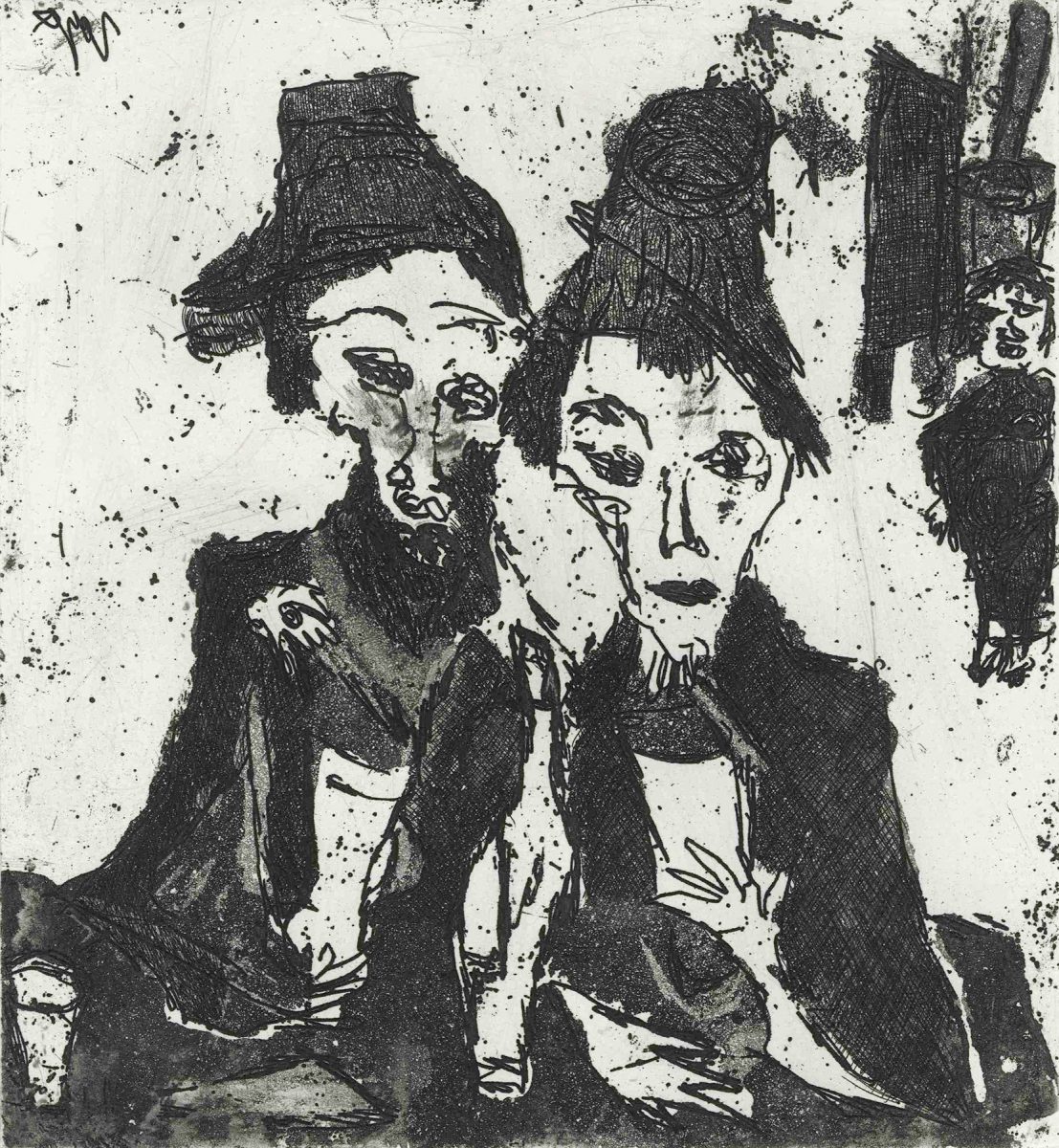
Jacqueline Oyex (1931–2006), Untitled, circa 1959, etching and aquatint on Arches wove paper, FWC&ASP-2014-0071
Isabelle and Jacques Treyvaud donation
Jacques Treyvaud was the first president of the Fondation. A director of the Banque cantonale vaudoise, and above all a passionate art lover, he used his influence to foster the creation of the first Cabinet cantonal des estampes, which was set up in 1979 at the Musée de l'Élysée in Lausanne. It was through the exhibitions organised by the Atelier de Saint-Prex at the Château de La Sarraz that he was introduced to the world of prints and became an unrepentant collector, initially of the artists working there and subsequently, through Pietro Sarto, of seventeenth-century French portraits, mainly by Claude Mellan. From the early 1980s onwards, he began looking for compositions by this artist with his pared-back burin, visiting museums and dealers assiduously in order to gain a better understanding of the art of this still little-known engraver. In 2014, together with his wife Isabelle, he decided to donate to the Fondation William Cuendet & Atelier de Saint-Prex his entire collection of works on paper, comprising more than 600 prints (250 by Mellan; 141 by Nanteuil; others by Callot, Dorigny, Ghisi, Fantin-Latour, Carrière, Redon and Lecoultre); paintings by contemporary artists including Sarto, Lecoultre, Tal Coat; and around fifty books and portfolios by various contemporary artists.
‘When I was a teenager, I developed a real passion for contemporary art, whether painting, sculpture, engraving or drawing. I was also lucky enough to discover Dr Hans Bechtler's collection of contemporary paintings. This huge collector taught me two essential things that have remained indelibly fixed in my memory: firstly, being able to tame a work that you don't understand or don't understand well, by having it constantly in front of you; secondly, seeing as many works as possible in the studios. He only bought in the studios himself and, in addition to his industrial work, he devoted one day a week to these visits throughout Europe.
My wife and I spent a lot of time at Pietro Sarto's printmaking studio in Saint-Prex, meeting Albert-Edgar Yersin, Edmond Quinche, Albert Chavaz, Albert Flocon, Michel Duplain, Marianne Décosterd and Pierrot Schopfer, Pietro Sarto, of course, and finally Pierre Tal Coat. In my professional life, from 1970 onwards, I started to create and then add to a collection of paintings for the bank where I worked; this activity lasted over thirty years.
In short, I was immersed in contemporary art. Concerning Mellan, it was only later that the shock came: it was in 1974, as part of the engraving exhibition at the Château de La Sarraz. All the works on show there were fascinating, but the one that really bowled me over was Claude Mellan's Sainte Face. It was the modernism of this engraving, dating from 1649, that struck me most. To achieve such simplification is literally astounding. After this discovery, as I knew virtually nothing about 17th-century French burin, I went to the dealers in search of new pieces and tried to find out more about Claude Mellan. At the time, there was no monograph devoted to this artist. His bibliography was very brief and not always positive. It was only in 1988, on the occasion of the Claude Mellan exhibition at the Bibliothèque nationale de France, that Maxime Préaud produced a quality catalogue entitled ‘L'Œil d'or’. Finally, in the same year, and under the direction of the same researcher, L'Inventaire du fonds français restored Claude Mellan to his rightful place. From that point onwards, many additions were made to our knowledge of the work. In the course of these readings, I came to understand the complexity of this language, the evolution from the classical cross-cut to the single-cut, the parallel strokes leading to what Florian Rodari aptly called ‘la gravure blanche’.
This research continued on each trip: we looked everywhere, even at framers who happened to find old engravings in coasters where they were used to add thickness...! These systematic searches led to unexpected finds: ten, fifteen, even twenty prints in one go. Some very fine prints by Mellan can still be found here and there, but they are becoming increasingly rare. Even if the engraved portrait, as a genre, is not fashionable and market prices remain very reasonable, the works hardly ever leave family collections and sometimes disappear in the course of succession. My personal favourites from this artist's output are the portrait of Nicolas-Claude Fabri de Peiresc and La Transfixion de sainte Thérèse after Bernini's famous sculpture in Rome, not to mention La Sainte Face’.
-
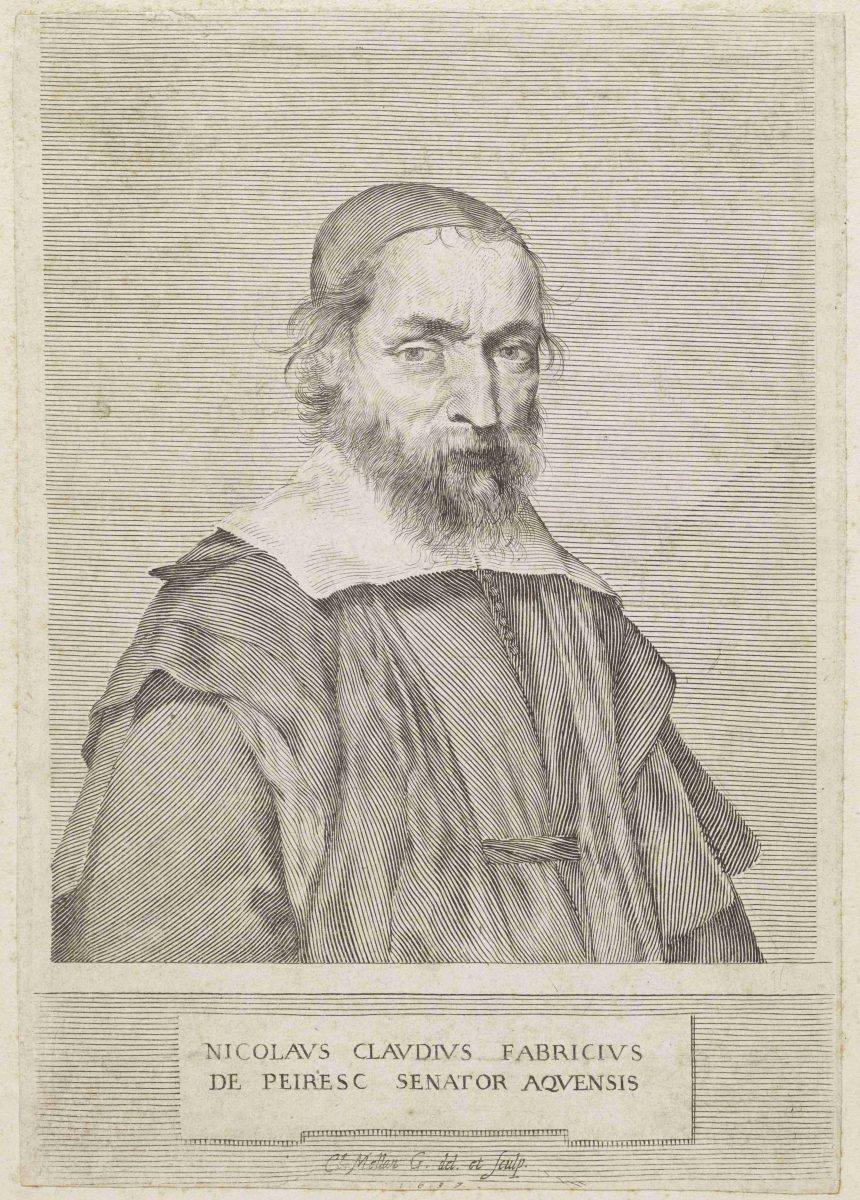
Claude Mellan (1598-1688), Nicolas-Claude Fabri de Peiresc, 1637, burin on laid paper, FWC&ASP-T-2015-0129
-
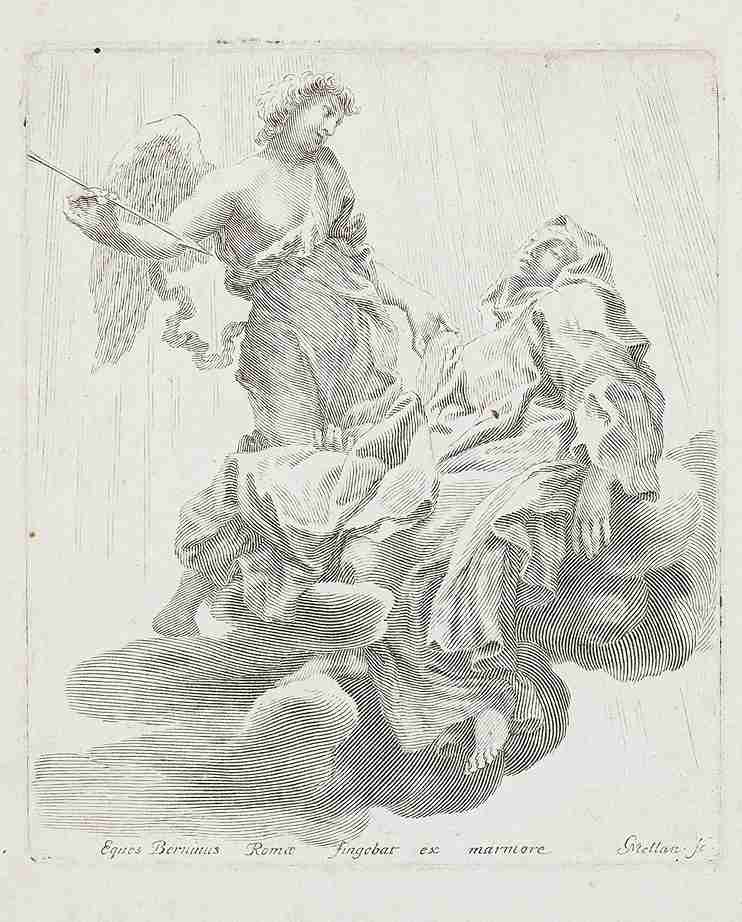
Claude Mellan (1598-1688), La Transfixion de sainte Thérèse (The Transfixion of Saint Teresa), undated, burin on laid paper, FWC&ASP-T-2015-0197
-
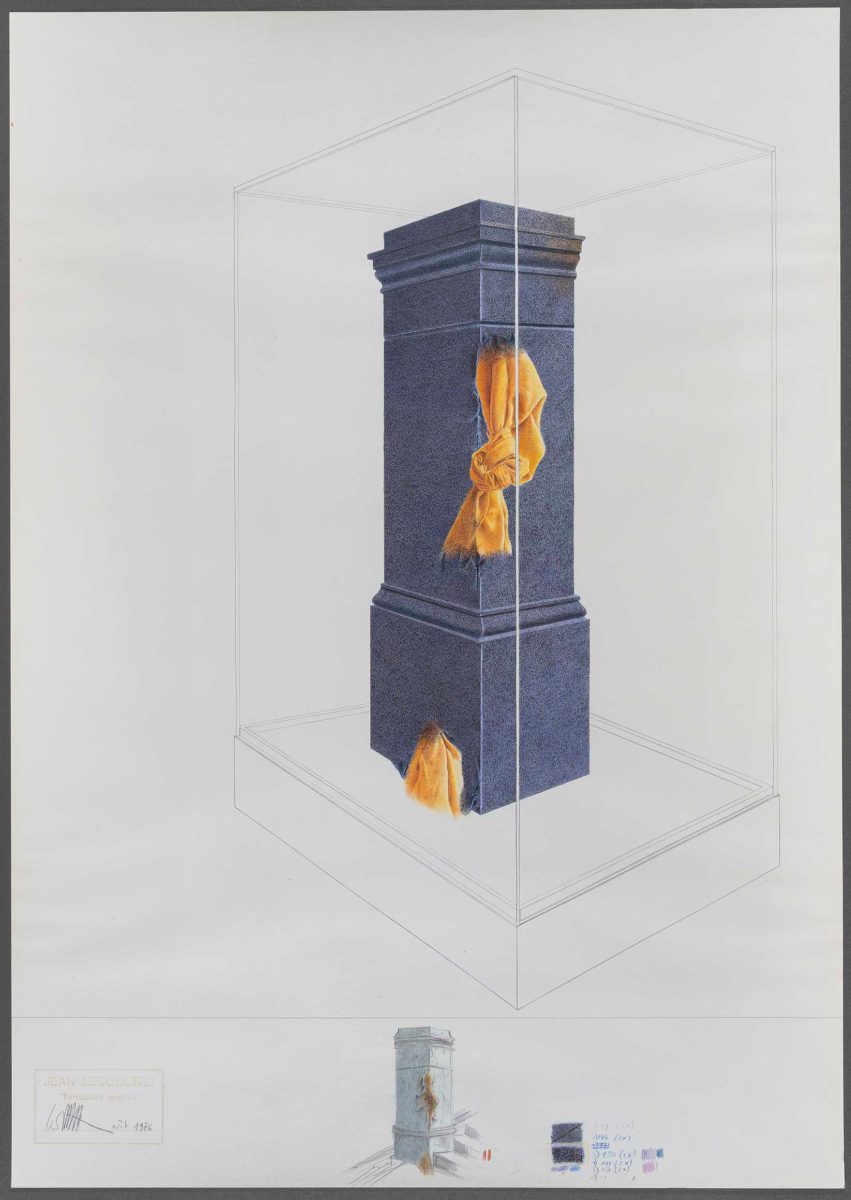
Jean Lecoultre (1930–2023), Untitled, from the series Territoires greffés, 1976, coloured pencils and graphite pencil on wove paper, FWC&ASP-T-2015-0517
-
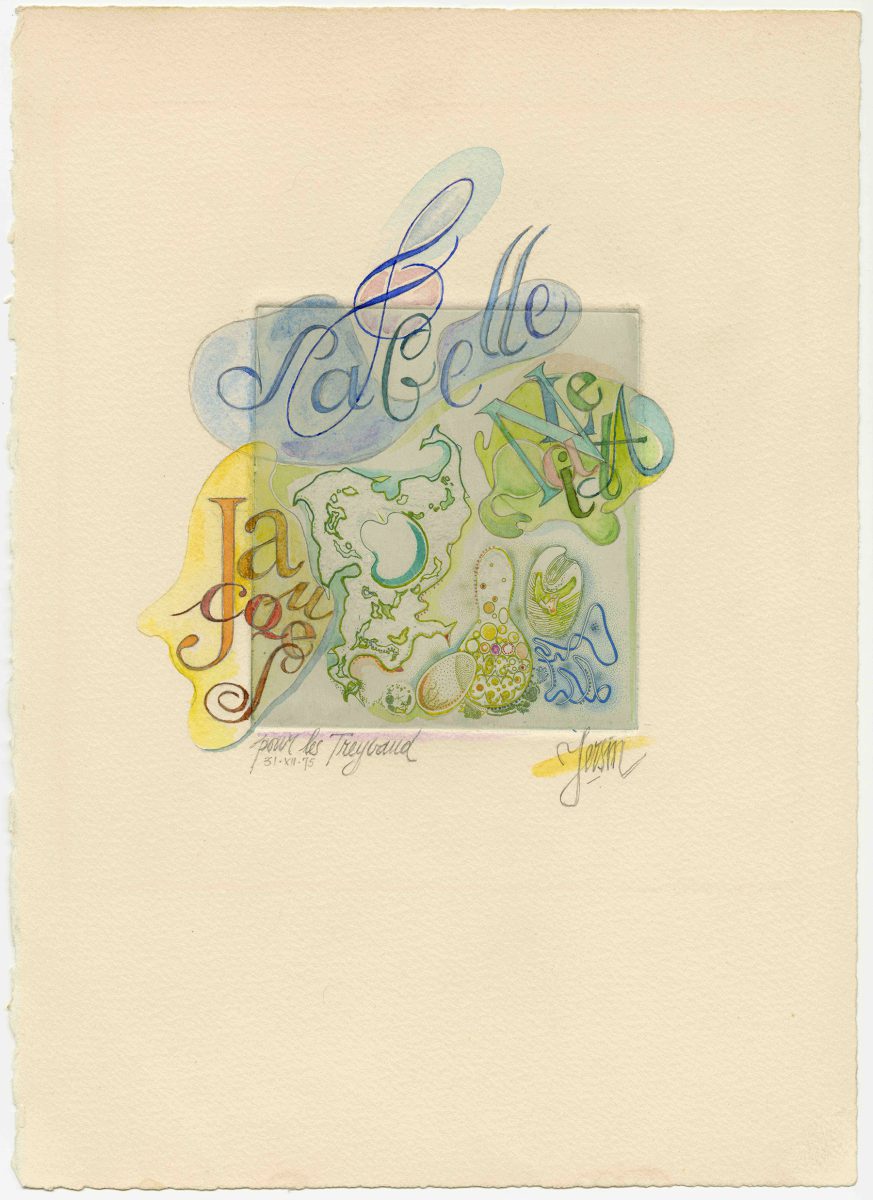
Albert-Edgar Yersin (1905-1984), Work in Progress XXIII, or Tropisme, pour the Treyvaud, 1975, burin, point and chisel enhanced with graphite pencil and watercolour on wove paper, FWC&ASP-TM-2017-0236
Acquisition of the Rossier-Koechlin collection
A prestigious collection of plates by Robert Nanteuil was added to the collection in 2010 thanks to the joint generosity of Gérard de Palézieux and the Koechlin family. These works came from a remarkable collection that was started in the mid-nineteenth century by Dr Henri Rossier, who settled in Vevey in 1859 and, alongside his many intellectual achievements, set up the dispensary for sick children in the town's rue du Torrent. It was at this time that Dr Rossier began to acquire portraits from the 17th-century French school of artists. Alongside these, he also bought woodcuts by Dürer, etchings by Jacques Callot, Van Dyck's Iconographie and modern lithographs, notably by Géricault, at the major auctions of the period. In the obscure shop of a local antique dealer, he also came across a panel by Pieter Brueghel the Elder, Le Pays de Cocagne, which he restored and which now hangs in the Alte Pinacothek in Munich. His passion for Nanteuil was subsequently passed on to his daughter Elisabeth Rossier and his son-in-law René Koechlin, and from 1961 onwards to his grandson Raymond Koechlin, who endeavoured to complete their collection of the engraver's oeuvre.
-
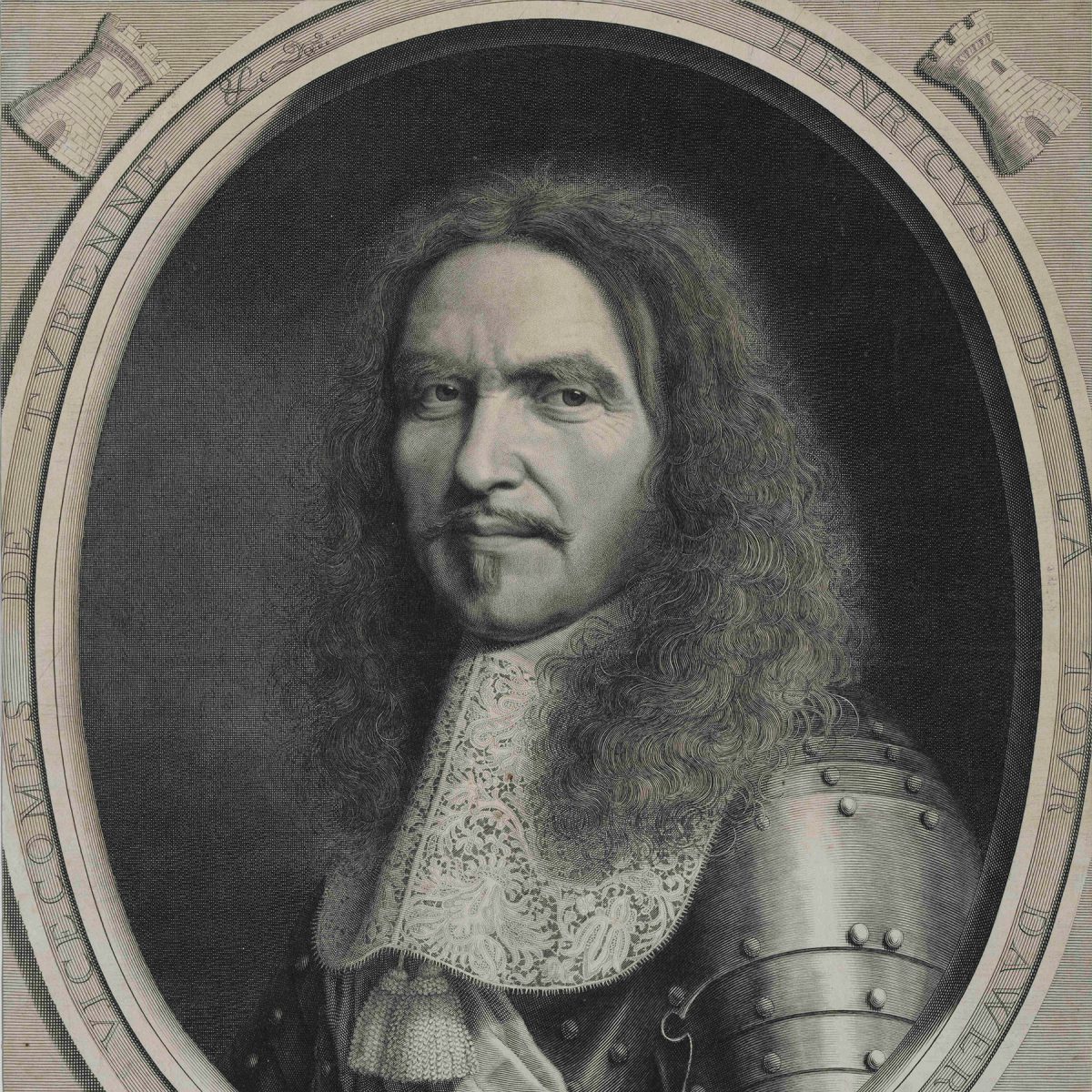
Robert Nanteuil (1623–1678), Henri de La Tour d’Auvergne, vicomte de Turenne, 1665, burin on laid paper, FWC&ASP-P, HR&RK-2011-0692
Berton-Huguet collection
This collection contains a significant number of works owned by three great lovers of art: Christian Berton, Rose-Marie Huguet and the late Claudine Huguet. Of French origin, Christian Berton taught philosophy for a long time in Fribourg and then in Lausanne, while his partner Rose-Marie Huguet was a social worker and her sister Claudine a special needs teacher. All three lived in Lausanne, and together they acquired the works they liked. As they never held any collecting strategy other than their own enthusiasms, the three did not want their works to be seen as a “collection” in its own right, but rather as the natural result of encounters with artists and their creations. In their ceaseless quest for beauty, they have frequented the Galerie Engelberts in Geneva as well as the Alice Pauli and l'Entracte galleries in Lausanne. They were also close to the Atelier de Saint-Prex, where they forged strong friendships, particularly with Pierre Tal Coat and Edmond Quinche. It’s thus hardly surprising that a large number of works by those two artists entered this collection—68 for Tal Coat and 285 for Quinche, representing most of the techniques and forms they worked in, including painting, wash, drawing, lithography and engraving. Alongside these two major oeuvres are works by artists such as Miklos Bokor, Marianne Décosterd, Michel Duplain, Jean Fautrier, Francisco de Goya, Ilse Lierhammer, Juan Martinez, Marcel Mathys, Pietro Sarto, Pierre Schopfer, Bram Van Velde, Albert-Edgar Yersin and Léon Zack. In accordance with a donation agreement signed on July 14, 2022, these works have been permanently added to the collection of the Fondation William Cuendet & Atelier de Saint-Prex, based at the Musée Jenisch Vevey.
-
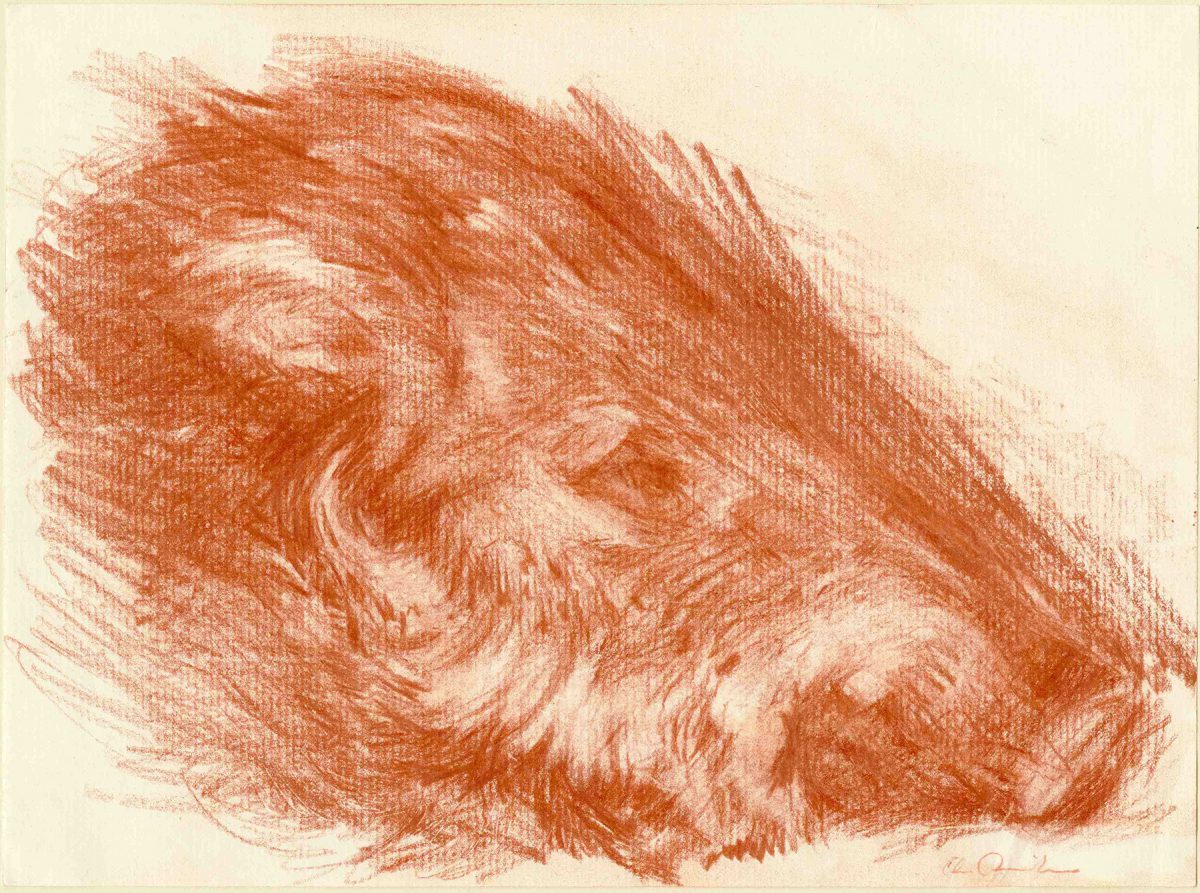
Edmond Quinche (*1942), Tête de sanglier (Boar’s Head), 1990-1995, red chalk on wove paper, FWC&ASP-EQ-0111
Donation Manuel Müller
Manuel Müller, a sculptor and wood engraver born in 1955, moved to Lausanne in 1983 after studying in Carrara and Paris. Close to the Atelier de Saint-Prex and the Musée Jenisch in Vevey, he has made several successive donations to the William Cuendet & Atelier Saint-Prex Fondation. The first of these gifts was of the engraved work of his father, the sculptor Robert Müller (1920-2003)—a vast collection comprising 408 items including 273 woodcuts, 129 zincographs and 2 drawings. Years later, in 2008 and 2020, Müller supplemented this donation with a gift of his own works, comprising 91 compositions, most of which are woodcuts.
-
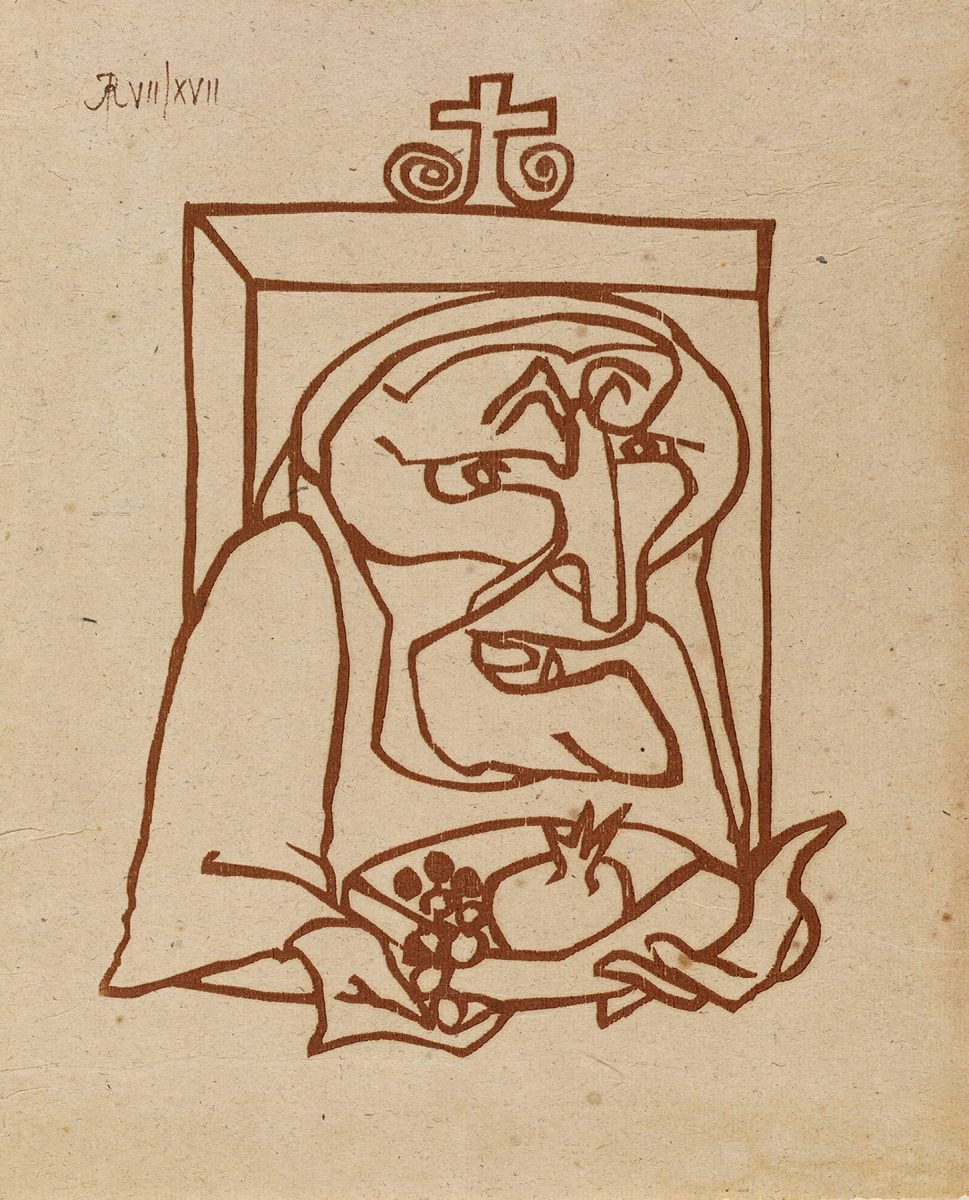
Robert Müller (1920–2003), Giagia, [1982], woodcut on old brown laid paper, FWC&ASP-2008-0344
-
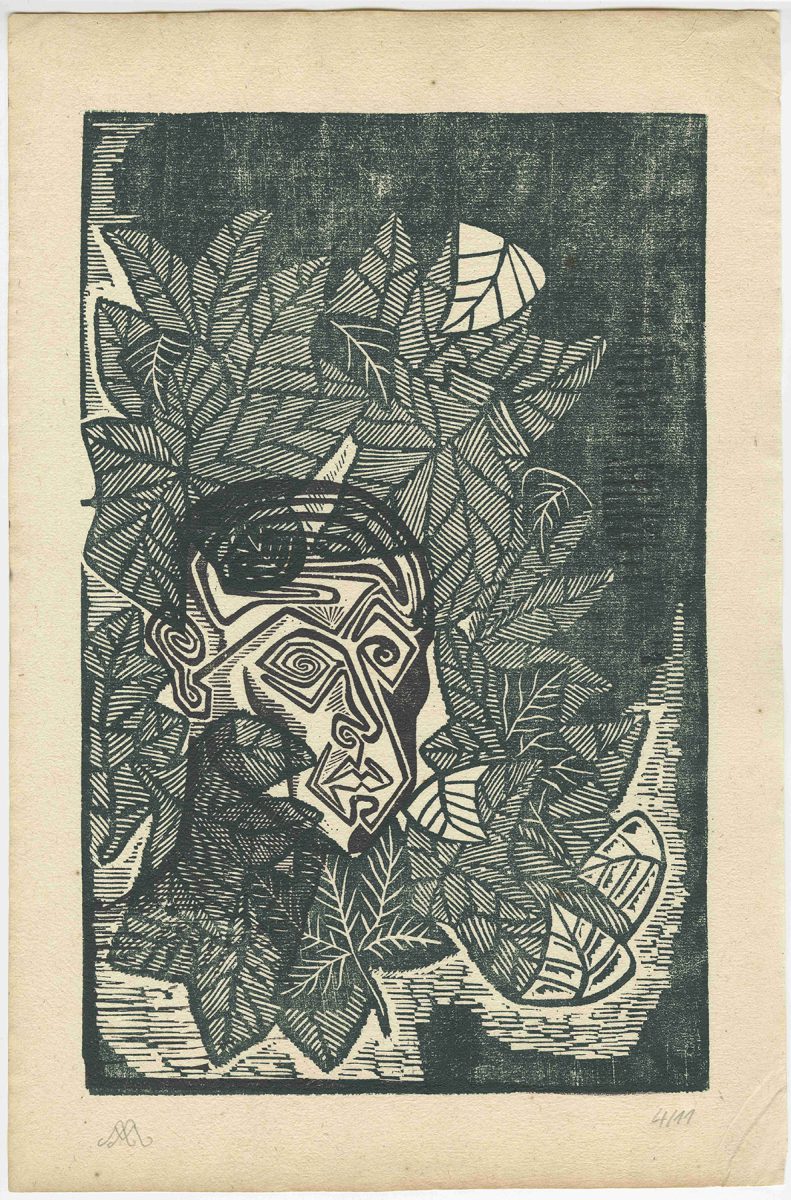
Manuel Müller (*1955), Automne (Autumn), 2019, woodcut on old laid paper, FWC&ASP-2020-0128
Ilse Lierhammer donation
Ilse Lierhammer worked in Lausanne for many years before moving to Basel. She recently wished to complete the ‘legal deposit’ of her numerous engravings printed on the presses of the Atelier de Saint-Prex by offering the Fondation the latest productions of her art. These recent works, which are now in the Fondation’s collection, include her latest prints, a set of paintings, watercolours, drawings and around 200 copper matrices. Ilse Lierhammer was also keen to donate her own collection of prints and several drawings by her artist friends, including Albert Flocon, Albert Chavaz, Zoran Music, Edmond Quinche, Pietro Sarto, Pierre Tal Coat and Albert-Edgar Yersin.
Pierre Schopfer
Pierre Schopfer, born in 1943, studied in Lausanne, where his teacher, Albert Yersin, soon introduced him to the art of engraving, particularly on steel. This skill enabled him to make a living starting in 1969, engraving banknotes and stamps for Switzerland and various foreign nations. While specializing in banknote engraving, Schopfer also nurtured a passion for both painting and artistic engraving. He became a involved in the L'Épreuve group and worked at the Atelier de Saint-Prex, sharing his artistic journey with his wife, Marianne Décosterd (1943-2018). Since 2004, the couple has made several donations to the Fondation William Cuendet & Atelier de Saint-Prex. Marianne began this tradition in 2004 with an initial deposit of 292 of Schopfer’s prints, which was later complemented by Pierre’s 2020 donation of 144 plates. The Fondation William Cuendet & Atelier de Saint-Prex hold a full 772 items by Schopfer, including prints, books, drawings, and albums of his fiduciary engravings. These items are all the result of generous donations, as well as targeted acquisitions by the Fondation William Cuendet & Atelier de Saint-Prex.
-
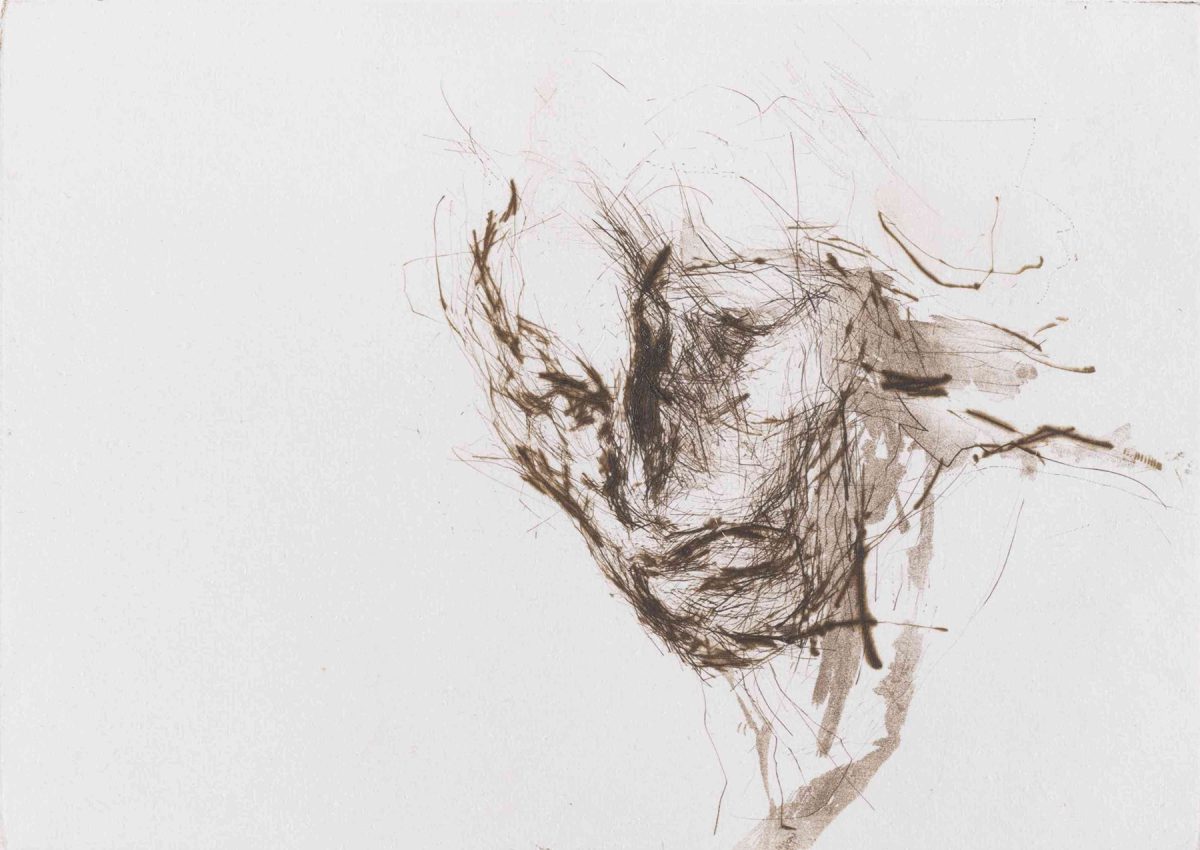
Marianne Décosterd (1943-2018), Autoportrait, ou Dans le miroir (selfportrait or, In the mirror), 1990, Drypoint and aquatint on wove paper, 159 x 224 mm, FWC&ASP-MD-2004-0185
